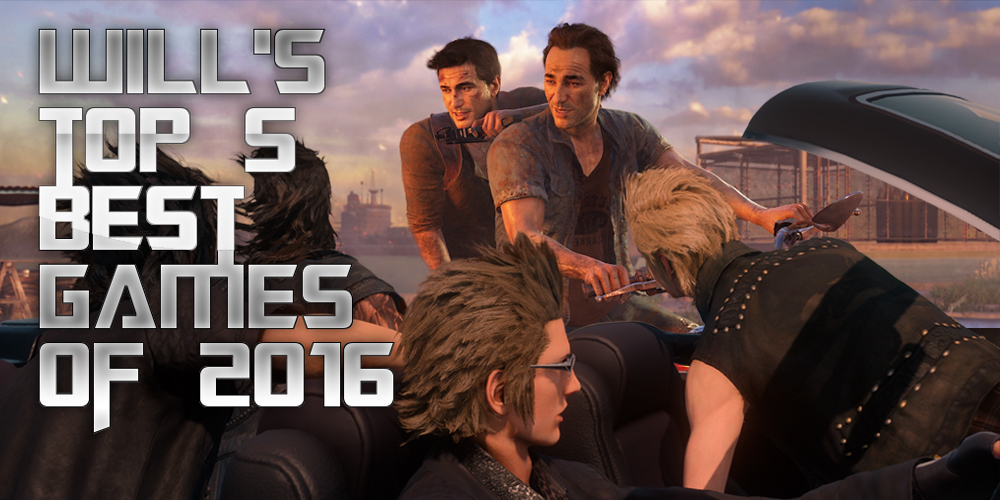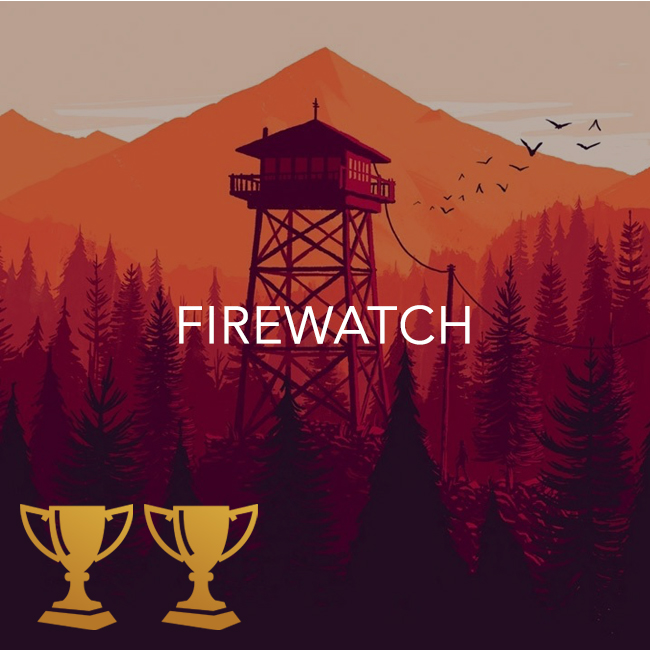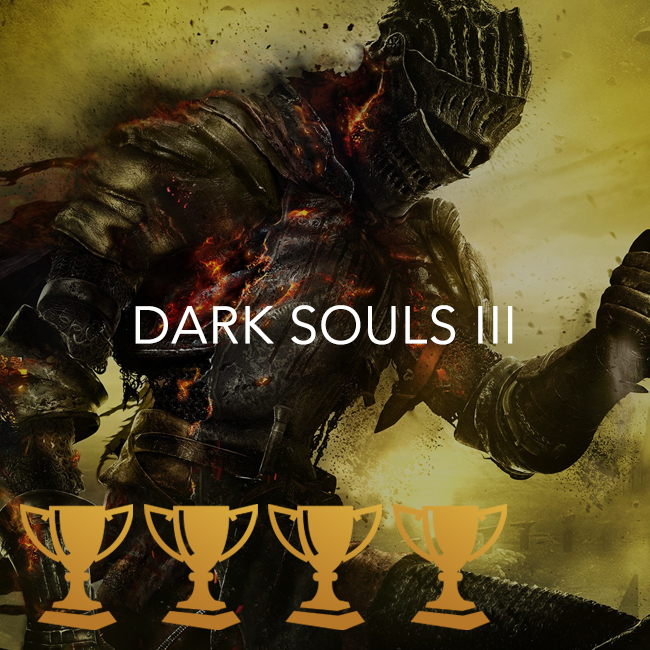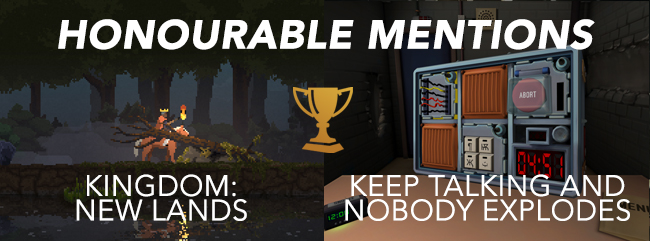
2016 was a pretty great year for video games, despite the fact it also allegedly beat most of the human race into a bloody pulp in basically every conceivable way possible (as confirmed by social media). But, hey. Games! Amirite?
For me personally, 2016 is also the year in which I became a parent, so on top of all the expected sleep deprivation and plethora of challenges that come with a new baby, I had to make some significant changes to how I consume games. Basically, if I wasn’t working on a review, I had to very carefully choose what to invest my time and money into, which is something I’ve not really had to do since I was in high school. It was weird, but a nice change of pace, too.
Personally, I’m a stickler for games which try to explore new ideas, even if they’re not perfectly executed. That’s often where I find the most joy. Otherwise, for me to become fully engaged in a game, it either needs to challenge me (mentally or mechanically) or have a compelling story to tell. It’s for this reason I wanted to take a bit of time talk about the games which stood out to me most last year—not necessarily for being the best objectively speaking, but simply those I had the best time with and why. Some of these games are far from flawless, but I highly recommend each one.

Released: December 6, 2016
Game Type: Action-adventure
Developer: genDESIGN, SIE Japan Studio
Platform(s): PlayStation 4
While, like many, I had been anticipating The Last Guardian since its debut in 2009, I only actually played a Team ICO game for the first time in 2014 during a big retrospective binge. Before that, I had no real emotional investment in its release and had long since put it out of mind as vapourware. However, Shadow of the Colossus was a revelation for me. Despite the fact I was almost a decade late to the party, it immediately chiselled a place in my heart as one of my favourite games of all time.
The Last Guardian is yet another well-designed game that feels wonderfully holistic in how all of its components come together to form a brilliantly realised world. I can’t tell you how refreshing it was to play a game without a HUD, waypoints, or typical “gamey” systems. Especially one that’s centred around puzzle solving, and where every solution is organically built upon established mechanics or by using the environment. That’s not to say I didn’t experience frustration in working out what to do or where to go next, or get angry with Trico who, much like a real animal, can be a complete ass when it comes to listening to the boy’s instructions. However, something about it all is so wonderfully endearing to a point where I think it was worth it. Trico is probably one of the best AI companions I’ve ever played alongside, and that bond pays off in dividends by the end.
At the same time, I really want to know whether designer Fumito Ueda has played a game in the past ten years because The Last Guardian is as dated as it is innovative. To a point where I envision a younger audience scratching their heads in astonishment as to why a game with so much hype behind it feels so broken at times. Gone are the sprawling fields of its predecessor where you had plenty of open space to manoeuvre. Much of this game takes place in a castle—one which you must navigate alongside a giant cat/dog/bird creature. If half as much effort went into the camera/controls as it did Trico’s feathers, I feel The Last Guardian would have had a better chance to make an impact, but these problems will likely deter some players. It’s actually mind-boggling Sony didn’t insist on fixing this before launch, as I just can’t get my head around anyone thinking PS2-era mechanical issues were going to go by unnoticed. Nevertheless, in an industry dominated by games with needlessly convoluted systems that break immersion and design that insists on treating players like a moron, I still believe some valuable lessons can be learned from The Last Guardian. If you’ve been looking forward to playing it, don’t let the shoddy controls put you off. It’s still a great game.

Released: February 9, 2016
Game Type: Adventure
Developer: Campo Santo
Platform(s): PlayStation 4, Xbox One, PC
Every year, without fail, I find myself becoming totally immersed in a unique assortment of narrative-driven games. I’m talking about titles such as To the Moon, Gone Home, Her Story and Life is Strange, where gameplay mechanics take a backseat to storytelling. Last year, my standout pick was Firewatch by Campo Santo, which successfully engaged me in what is probably one of the most tedious jobs on the planet: fire lookout.
Set in 1989, following the Yellowstone fires of 1988, the game follows Henry and his supervisor Delilah after strange things begin happening in the park. It’s a fascinating premise for a video game, but the real triumph of Firewatch is the relationship that forms between Henry and Delilah and how they interact with each other. Of course, it’s a bit more complicated than that. Henry, the game’s protagonist, takes up this remote position because he’s essentially running away from his wife Julia who has early early-onset dementia—with whom he doesn’t know how to handle and can’t cope being around. The underlining themes are both heavy hitting and morally questionable, and, as a result, I found Henry to be one of the most flawed, human-feeling characters I’ve ever personally played as.
You never actually get to talk with Delilah face-to-face, which is a huge part of what makes it work so well; instead conversing over a walkie-talkie as you go about your job and investigate the mysteries at hand. It’s a design choice which serves to ensure the sense of isolation and disconnect Henry feels is also experienced by the player. When interacting with her, though, I often felt self-conscious of her opinions—almost as if I was dealing with a real person at times. It was unsettling, but in a good way. Although, I don’t think it would have worked so well without such great voice acting, which is delivered with a level of emotional nuance that clearly defines the personality of each character. Something else I also appreciated is the art direction and soundtrack, which work hand-in-hand to create a warm and oddly comforting vibe that still resonates with me almost a year later. Firewatch is both a cathartic experience as well as one of emotional intensity, and at only 4 hours in length, I recommend blocking out an afternoon to give it a shot.

Released: November 29, 2016
Game Type: Role-playing
Developer: Square Enix
Platform(s): PlayStation 4, Xbox One
If there is one thing you can count on when a new mainline instalment of Final Fantasy releases, it’s that the fanbase is going to be highly divisive about it no matter what. For all its strengths and weaknesses, Final Fantasy XV is no exception. It’s both a radical departure for the series in some ways, as well as the closest Square Enix has come in over a decade to recapturing what makes Final Fantasy so special.
There’s no denying Final Fantasy XV is a game with some significant flaws (the narrative delivery and pacing of the second half, in particular), but hell if I didn’t have a good time with it all the same. Basically, the gist of it is that director Hajime Tabata was brought in to pick up the pieces of another game that never went fully into development, and he simply didn’t have the time needed to realise his vision to its fullest. There wasn’t a 10 year development cycle.
What does set this instalment apart from other modern Final Fantasy games, though, is its ambition and relentless push to innovate. Whether you’re a fan or a first-timer, there’s a lot of fun to be had here. The game has a wonderfully realised open world that’s full of unique ideas, tonnes of content, and a new combat system that’s surprisingly fleshed out. Noctis, Ignis, Gladiolus and Prompto are also just a straight up great cast of characters, whose heartfelt tale of camaraderie supersedes the game’s underlining problems to deliver an emotionally rewarding role-playing experience.
I definitely can’t say Final Fantasy XV is the most well-made game of 2016 or that it’s “technically” the best. It is great, mind you, but there are other games more deserving of that particular recognition. What I can say, however, is that after so many years of missteps and fears of declining relevancy, I am once again convinced that Final Fantasy has untapped potential. It’s become clear Hajime Tabata has a vision for the series—one that’s driven by a love of Final Fantasy and respect for its fans. Not only that, but it seems the game still has a long way to go yet, with an obscene amount of content, features and expansions still to come. If you’re not convinced now, definitely check back in a year.

Released: March 24, 2016
Game Type: Action role-playing
Developer: FromSoftware
Platform(s): PlayStation 4, Xbox One, PC
I have to admit I’m still a little in awe at how popular this franchise has become in recent years. Every time a new instalment releases, the internet fills with hype, chatter, superiority complexes, and lots and lots of memes. It’s immensely heartwarming to watch unfold as a longtime fan, especially as Dark Souls has long been categorised as a game that’s “not for everyone.” Although, apparently that’s not the case anymore as Dark Souls III was ranked as number 5 for peak player numbers on Steam in 2016.
I won’t lie, I had big concerns going into Dark Souls III. Despite Miyazaki helming as director, it felt way too soon, and I was worried what impact this might have on the quality of the game. However, as it turns out, my fears were basically for nought. I’d even go as far as to say it’s one of their best games yet. FromSoftware successfully combined the best qualities of Dark Souls (and Bloodborne) to wrap up the mainline series in a fashion that’s as fresh and exciting as it is familiar. It’s ironic, too, because I’m generally not a fan of games which are more of the same. And yet, here I am, praising another Dark Souls instalment. Is it the world design, the art direction, the punishing yet rewarding gameplay, the interconnectivity, or just an obsession?
I think, above all else, the reason I keep coming back to these games is the heightened sense of awareness I experience while playing. As someone who plays a lot of games, it’s easy for things to blur together after awhile, or to contently cruise through a game without taking in the finer details. I can’t deny the mechanics have lost that “new car” smell over the years, but playing one of these games is more so about plunging yourself into the unknown. Despite five instalments and inherent similarities, when you step into a Souls game, you never truly know what to expect. It’s that apprehension, I think, that allows you to grow intimately familiar with your surroundings while also learning from mistakes to overcome great obstacles. It can be punishing, but the sense of achievement you walk away with is unmatched, and the way the game allows you to share all of your triumphs and discoveries with others is unparalleled. Dark Souls III is not only a fitting swansong for a much beloved series, it’s a well-made and straight up excellent game.

Released: March 24, 2016
Game Type: Action-adventure
Developer: Naughty Dog
Platform(s): PlayStation 4
A “best of” list praising the most critically acclaimed game of 2016 isn’t exactly shocking, I know. However, the reason Uncharted 4 was my favourite game last year is perhaps not what you’re expecting. If anything, I’ve been a bit more critical of this game than some, but that doesn’t change the fact I enjoyed it IMMENSELY.
Simply put, A Thief’s End is one of the most well-produced games ever made. Not only does it tell one of the best pirate stories of the modern era, it also wraps up a long-running and beloved series in a way that’s truly fitting. That in of itself is a remarkable achievement!
I know I said I often find the most joy in games with unique ideas (even if they aren’t always the most polished or well executed), but sometimes you’ve simply got to appreciate fine craftsmanship, and that basically sums up anything developed by Naughty Dog to a tee. Uncharted 4 knows what it wants to be, and it does that superbly. Although, merits aside, the reason this game resonated with me more than any other is because of how I got to experience it.
Uncharted 4 was the first game I was able to share with my newly expanded family. Like a HBO series, we would sit together as a family and spend an hour each night as I played through a few chapters—my wife (who doesn’t play games) and young daughter watching every moment, helping to solve puzzles, and cheering me on with excitement. You may be thinking, “well, that could have been any old game, right?” To which I’d say no. It was possible because of the cinema-esque appeal of the Uncharted series and its linear storytelling; which, when combined with an element of interactivity only possible in video games, comes together in a way where even a spectator can feel fully engaged. In an industry where open-world and multiplayer games are more popular than ever, Uncharted 4 is a reminder just how fantastic these sorts of games still are. Linear shouldn’t be considered a dirty word—sometimes it’s just great to enjoy something that’s been expertly crafted from beginning to end, and that’s why it was my favourite game of 2016.

I wouldn’t be surprised if many of you haven’t heard of these two games—I personally hadn’t when I stumbled across them. Although, honestly, this is something I love to do when I’m in-between assignments and have a weekend to burn with no commitments, is browse through the various online stores for unique and interesting games I might like.
Let me first start by explaining Kingdom: New Lands, which is a 2D pixel-art side-scrolling kingdom-building simulation game. It’s basically unlike anything I’ve ever played before personally, but imagine something kind of like Age of Empires mixed with Tower Defence. You play the role of a king or queen, and work to recruit subjects, collect coins and resources, build up your kingdom, and fight off attacks. There is a day/night cycle, plenty of upgrades, as well an element of risk versus reward for exploring. However, what makes it so unique is the fact you can only move left and right (although you are horseback). It’s both challenging and addictive, so if you’re into that sort of thing, give it a shot.
Keep Talking and Nobody Explodes, on the other hand, is undoubtedly the best asymmetrical multiplayer game I’ve ever played. While it technically released on other platforms in 2015, I only got a chance to play it over the holidays with PSVR and it totally blew me away. Basically, one person wears the VR headset and are placed in a virtual room with a randomly generated bomb. The other participants have use of the main screen where they are given access to the manual. Together you must talk it out to work to defuse the bomb without either party seeing what the other sees. And let me just say, this game is HARD. It’s not something you would just pick up and play casually, but as you learn its ins out outs, it may just be one of the most rewarding games you ever play. I honestly can’t recommend it enough.











